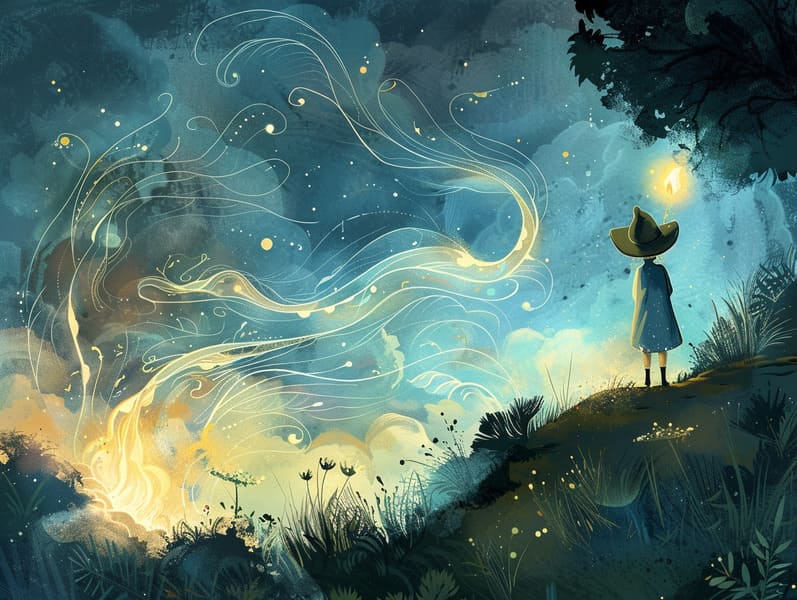Exploring the Roots of Historical Fairy Tales with Their Everlasting Elegance.
Exploring the Roots of Historical Fairy Tales with Their Everlasting Elegance.
Blog Article

Timeless fairy tales have historical significance. These tales have been passed down from one generation to the next ages before they were ever written down. They sprang from a variety of cultures, including Indigenous traditions. They were initially conveyed among elders, often carrying themes and messages reflective of the societal norms and beliefs of the time.
The renowned Brothers Grimm, Jacob and Wilhelm Grimm, were among the first to gather and publish many of these beloved narratives. Their collection, "Grimm's Fairy Stories," included tales like "Cinder Maid," "Hansel and Gretel," and "Schneewittchen," which have since become classics in the world of famous fairy tales. Similarly, the Danish author's magical narratives, such as "The Sea Maid," and "The Little Duckling," have touched hearts worldwide, securing their place in the pantheon of timeless fairy tales.
Despite their historical roots, these tales remain as applicable as ever, especially as children's bedtime stories. These charming stories are now available in numerous formats, including colorful picture books, enchanting animations, and digital fairy tales.
Their persistent charm can be attributed to several enchanting factors:
Important Morals: Ancient fairy tales often provide important moral lessons. Tales like "The Boy Who Cried Wolf" teach the merit of truth, while "The Race of the Tortoise and the Hare" show the values of perseverance and unpretentiousness. These tales offer young readers clear distinctions between ethical and unethical, developing their moral compass in a tender yet lasting way.
Compassion and Knowledge: Classic fairy tales frequently feature heroes facing obstacles and hardships, stimulating audiences to feel with their struggles and celebrate their triumphs. For instance, "The Story of Beauty and the Beast" reveals the importance of looking deeper to acknowledge the real character of a individual, nurturing insight and perception.
Cultural Comprehension: Many fairy tales are deeply ingrained in the cultural contexts from which they bloomed. Learning from these fairy tales can provide fascinating glimpses into different customs, cultivating a sense of global insight and appreciation.
Inventiveness and Imagination: The magical elements in timeless fairy tales—mythical entities—activate children’s visions and dreams. These fairy tales carry readers to fantastical realms, engendering creative thinking and a sense of marvel that continues a lifetime.
Old fairy tales are not only fascinating but also illuminating. They act as whimsical tools in nurturing various brain and heart skills in children. When ancient fairy tales are told out loud, they foster verbal skills by offering new language and complex sentence structures. This practice also strengthens hearing abilities and attention, as young ones remain attentive, keen to see what happens next.
Furthermore, examining the themes and characters of ancient fairy tales can sharpen thinking skills and thought processes. Kids are instructed to pinpoint patterns, foresee events, and comprehend cause and effect. These discussions also assist kids say their thoughts and feelings, boosting their emotional intelligence.
In today’s digital age, the availability of digital storybooks has made these stories more within reach than ever. Online platforms and applications offer extensive collections of children's fairy tales that can be explored or listened through anytime, anywhere. Fairy tales voiced are particularly widespread, featuring an enjoyable way for kids to take part in these alluring stories. Read-aloud stories and narrated videos lead characters and settings to life, often augmented by mesmerizing music and melodies that intensify the story journey.
The unending appeal of old fairy tales lies in their ability to modify to changing times while preserving their central values. Contemporary updates of these fairy tales often include more multicultural characters and modern settings, making them relevant to today’s audience. However, the fundamental themes of fortitude, goodness, and fair play remain unchanged, continuing to connect with audiences of all ages.
Traditional fairy tales also offer a sense of warmth and knowability. They offer a neat narrative with a clear beginning, middle, and end, often winding up with the culmination of conflicts and the triumph of virtue over wickedness. This predictability can be consoling for kids, bringing a sense of solidity in an fluid world.
Timeless fairy tales continue to spellbind and coach new generations, maintaining their wonder and applicability in modern society. As children's bedtime stories, they afford a perfect blend of fascination and comprehension, enriching moral values, empathy, and creativity. The prevalence of digital fairy tales and the popularity of fairy tales voiced validate that these classic tales remain within reach to new generations.
By continuing and disseminating these narratives, we continue to appreciate the rich tapestry of narrative artistry and cultural heritage. Whether you are discovering a gorgeously illustrated book, accessing a web-based library, or listening to an audiobook, the grace of famous fairy tales is here always within reach. These fairy tales emphasize of the persistent power of fairy tales and its ability to connect us across time and space.
Even if you are perusing a vividly illustrated book, experiencing a cyber collection, or listening through an narrated book, the charm of classic fairy tales is always within reach.
These fairy tales point out of the unwavering strength of fairy tales and its ability to tie us across centuries and lands, casting a charm that enchants and educates alike.